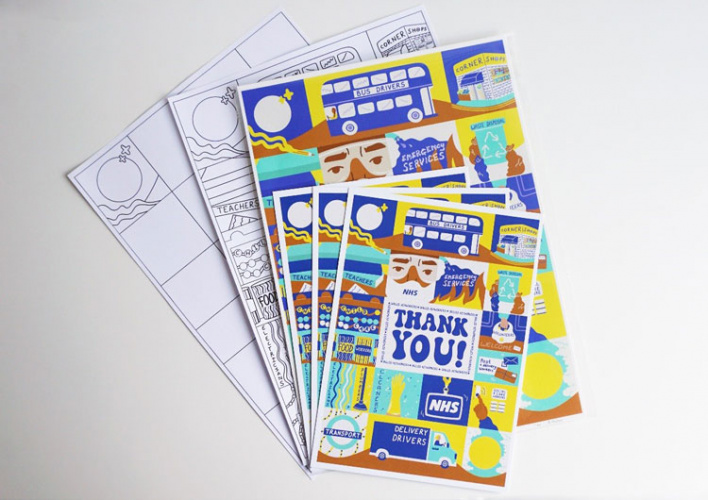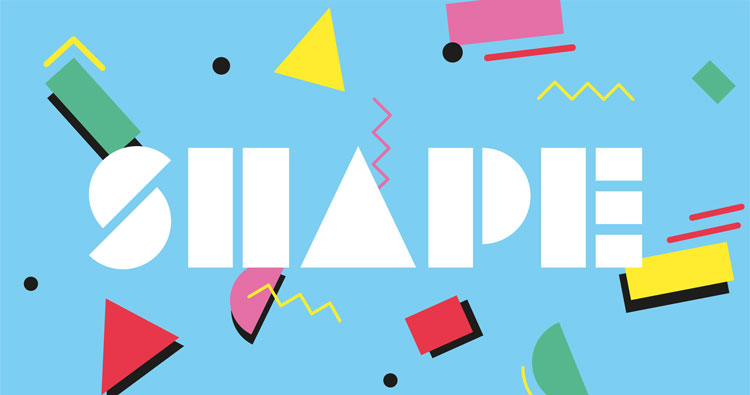A Design Week guide to creative kids’ resources in lockdown
Family life in lockdown has been tough for many, but designers and the wider creative community have rallied throughout to develop creativity-led resources, activities and initiatives to ease pressure on parents and carers – here’s our favourites.
Games Designer Club, from Tech Will Save Us

The Games Designer Club is a “creative hub” packed with hands-on projects themed around game design and invention. Aimed for kids aged between six and ten (and over), the activities have been devised so they can easily be engaged with independently or with help from the family.
The initiative has been set up as a gradual learning process – kids can slowly obtain and build on coding and design skills as they complete more projects. And as they do, they earn badges. Projects usually take around 45 minutes to an hour, and are largely split between arcade-style coding games, invention and design activities and coding. It is free to join the club, and new projects are uploaded weekly by the Tech Will Save Us team.
“Thank you skilled keyworkers” activity sheets, from Erin Aniker

Wanting to bring colour and creativity in her support of key workers, illustrator Erin Aniker has spent her time in lockdown working on a poster that celebrates the UK’s key workers. Cleaners and waste disposal workers, delivery and transport drivers and teachers and carers all feature on Aniker’s grateful work.
Having finished the piece, Aniker has since worked the poster into several different iterations, including postcards and art prints. Packs vary, but creatively-minded parents may wish to check out her colouring in and activity sheet pack. All profits from the sales of the poster and its variations (which can be purchased from Aniker’s website) will be going to the Masks for NHS Heroes initiative. (Also featured in article banner.)
The SHAPE Initiative, from White Bear

Wanting to do its bit for the creative community and its kids, the team at London- and Dublin-based studio White Bear has relaunched its SHAPE initiative. The project, which was originally launched more than a year ago to encourage creativity in schools, has been refocused for life amid the pandemic and will provide young people with access to online workshops hosted by some of the UK’s leading creatives.
Intending to give young people “brain food”, the topics covered will include design, creative writing, animation and video making. All lessons are interactive and held via Zoom. Sessions are free, and are mainly aimed at teens. Those interested should head to the White Bear website to register interest.
Young Design Museum, from the Design Museum
Teaching design to kids at home can be tricky, but London’s Design Museum is hoping to help. Since lockdown was announced, the team has been publishing a set of lesson plans for parents and carers to engage children in design learning.
Lessons are inspired by the Design Museum’s collection and wider circle of creatives, and each comes with a video explaining the processes behind the learning, as well as a worksheet of suggested activities to follow on with that focus on common household items. This week’s learning was inspired by Frank Gehry’s Wiggle Side Chair, and encourages kids to get creative with any cardboard they can find around the home.
Those who end up producing pieces from the lesson are encouraged to share their work on social media, under the hashtag #DesignFromHome.
Tate Paint, from Tate

For those looking for something a little less directed Tate’s kids team has developed Tate Paint, an online painting tool for children to get creative on their own terms.
Kids can begin by choosing a canvas, before being given a range of virtual artistic materials with which to create. Some are more conventional that others, with the programme offering the using paints and pens, as well as some more “out-there” mediums like eggs, bubbles and rainbow rollers. User-interface is easy to use and kid-friendly.
Tate Paint can be accessed on by desktop, tablet or mobile through the Tate website, and users are encouraged to share their artwork after.
The Great Exhibition at Home, from Big Ideas
For parents looking to top up their children’s science education at home, the team at Big Ideas is inviting people to join their Great Exhibition at Home initiative. Taking inspiration from the Great Exhibition of 1851, the seven-week programme of lessons provides families with structured and creative STEM activities.
Free resources are available throughout the process, which can be picked up and started at any time through until July. The initiative will culminate in a national competition which asks students to create and share a Great Exhibition from wherever their classroom may be – with the opportunity to win £500 worth of STEM equipment for their school. Those wanting to join in with this digital education scheme should head to the Big Ideas website, where they will find information on how to enter.
#LetsBuildTogether, from LEGO
Aiming to help families “stay curious” while also easing pressure felt by parents juggling life amid a global pandemic, a team working at LEGO has created a series of play inspiration activities. Devised by the company’s LEGO designers, “STEM gurus” and play experts, the initiative also includes live “build-a-longs” on social media and daily building challenges.
With the intention of making the challenges as inclusive as possible, many do not actually require LEGO bricks to complete – for example “Beat the Alarm” is a game based on hide and seek, and only requires a mobile phone or other device with a settable alarm. Families wanting to take part are encouraged to share their activities and masterpieces on social media under the hashtag #LetsBuildTogether.
Also check out:
Dyson’s STEM challenges for kids.
The V&A’s weekly design prompts.
-
Post a comment





